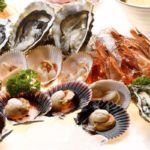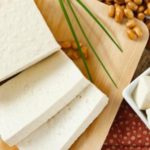Shrimp and squid are delicacies enjoyed by many, especially children. Many homemakers also buy the ingredients and prepare this dish for their families, but often end up with a mess of “shrimp in one place, batter in another.” How can we prevent this from happening? Read on to find out!
1 Keep the filling dry before frying
The filling plays a crucial role in fried dishes. Whether you choose shrimp, squid, or fish as your filling, always remember to wash and thoroughly dry the filling first. This is because moist filling can cause the batter to slide off, even before frying.
If you wish to season the filling in advance, use only salt and pepper. Avoid using wet seasonings.

2 Refrigerate the battered filling for 30 minutes before frying
Next, roll the filling in flour, followed by egg, and finally, breadcrumbs or crushed crackers.
Once battered, avoid frying immediately. Instead, place the filled items in the refrigerator for about 30 minutes. The cold temperature will help the batter adhere firmly to the filling.

3 Fry in enough oil over medium heat
When frying, ensure the oil completely covers the food. This will result in crispier batter and faster cooking of the filling.
Use medium to low heat while frying, as excessively high heat can cause the batter to stick to the pan and come off the filling. After frying, remove the shrimp or squid and place them on a paper towel to absorb excess oil.
Reference:

With these three simple tips, you can now prepare shrimp, squid, and other fried delicacies just like your favorite restaurants, without the hassle of batter falling off. Good luck, and happy cooking!
How to Choose Fresh Seafood: Important Cabinet Tips
In recent years, concerns have been raised over the practice of injecting urea and chemicals into seafood, making it difficult to find safe and fresh options. To help, DienmayXANH.com offers some tips on how to select the best seafood available. Seafood is a rich, delicious, and nutritious source of food, and this advice will help ensure you make the most of it.





































